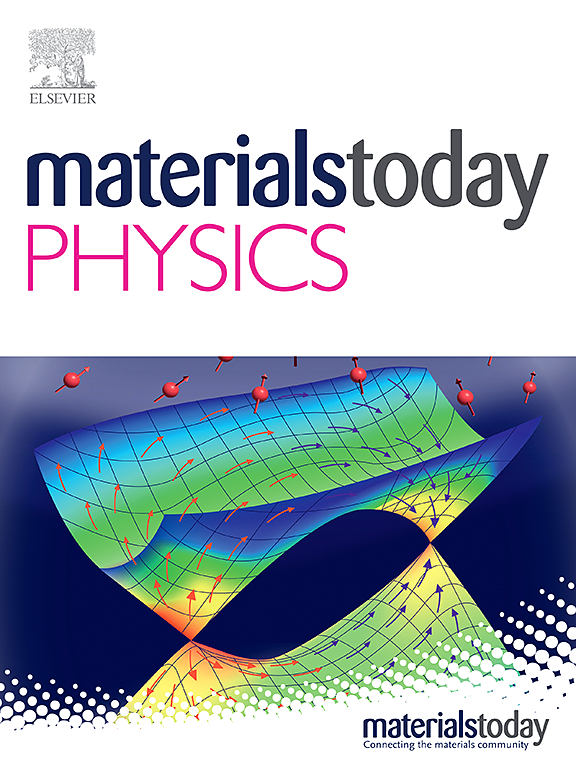氧空位驱动的界面合金化和混合以增强氧化镓的传热能力
IF 10
2区 材料科学
Q1 MATERIALS SCIENCE, MULTIDISCIPLINARY
引用次数: 0
摘要
β-氧化镓(β-Ga2O3)具有超宽带隙和高临界磁场强度,是电力电子应用领域的理想材料。其应用的瓶颈问题在于促进散热和稳固的界面接触。与一般认为干净的界面会带来高热导率的观点相反,我们在这里展示了一种相反的策略,即通过合金化界面来显著促进热传导。通过复杂的机器学习驱动的分子动力学模拟以及全面的密度泛函理论分析,我们证明了氧空位(VO)是 β-Ga2O3 和金层之间声子耦合的关键促进因素。声子态密度和光谱热流分析揭示了一个非凡的机制:VO 因反向界面内置电场而催化了界面混合,产生了类似合金的过渡区域,从而有效地弥合了声子失配,实现了更高效的声子传输。中间散射函数分析表明,虽然 VO 保持了长程结构完整性(q = 0.51 Å-1),但它在较短的长度尺度上显著改变了局部原子动力学。我们的研究结果为开发先进的散热策略开辟了新途径,为开发新一代高性能电子系统提供了重要见解。本文章由计算机程序翻译,如有差异,请以英文原文为准。
Oxygen vacancy-driven interfacial alloying and mixing for enhanced heat transfer in gallium oxide
β-Gallium oxide (β-Ga2O3) is a superior material for power electronic applications due to ultra-wide bandgap and high critical field strength. The bottlenecking issue for its application lies in promoting heat dissipation and robust interfacial contact. Opposite to the common notion that a clean interface leads to high thermal conductivity, here we demonstrate an opposite strategy with alloying the interface for a significantly promoted heat conduction. Through sophisticated machine learning-powered molecular dynamics simulations coupled with comprehensive density functional theory analyses, we demonstrate that oxygen vacancies (VO) serve as key facilitators of phonon coupling between β-Ga2O3 and Au layers. The phonon density of states and spectral heat current analyses unveil a remarkable mechanism: VO catalyzes interfacial mixing due to inverted interfacial built-in electric field, generating an alloy-like transition region that effectively bridges the phonon mismatch and enables more efficient phonon transmission. Intermediate scattering function analysis reveals that while VO maintains long-range structural integrity (at q = 0.51 Å−1), it significantly modifies local atomic dynamics at shorter length scales. Our findings open new avenues for developing advanced heat dissipation strategies, offering crucial insights into the development of next-generation high-performance electronic systems.
求助全文
通过发布文献求助,成功后即可免费获取论文全文。
去求助
来源期刊

Materials Today Physics
Materials Science-General Materials Science
CiteScore
14.00
自引率
7.80%
发文量
284
审稿时长
15 days
期刊介绍:
Materials Today Physics is a multi-disciplinary journal focused on the physics of materials, encompassing both the physical properties and materials synthesis. Operating at the interface of physics and materials science, this journal covers one of the largest and most dynamic fields within physical science. The forefront research in materials physics is driving advancements in new materials, uncovering new physics, and fostering novel applications at an unprecedented pace.
 求助内容:
求助内容: 应助结果提醒方式:
应助结果提醒方式:


